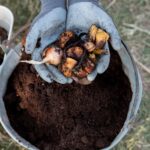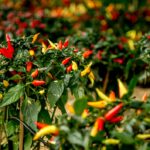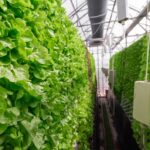Fish farming, also known as aquaculture, is an increasingly popular agricultural venture in South Africa. With a growing demand for fish as a healthy protein source and the potential for significant profits, fish farming offers an opportunity for farmers to diversify their income streams. This guide provides essential tips and steps to help beginners start a successful fish farming business.
1. Understand the Basics of Fish Farming
Before starting, it’s crucial to understand what fish farming entails and assess whether it aligns with your resources and goals. Fish farming involves raising fish in controlled environments, such as ponds, tanks, or cages, for commercial purposes.
Key Points to Consider:
- Types of fish farming: Choose between freshwater or saltwater farming, depending on your location and resources.
- Commonly farmed fish in South Africa: Tilapia, catfish, and trout are popular due to their adaptability and market demand.
2. Research the Market
Understanding the market for fish is essential before investing in aquaculture. Identify your target customers and assess local demand for different fish species.
Questions to Explore:
- Who are your potential buyers? Consider households, restaurants, supermarkets, and fish processors.
- What species are in demand? Tilapia and catfish are widely consumed in South Africa.
- What is the competition? Analyze the pricing and supply of existing fish farms in your area.
3. Select the Right Fish Species
Choosing the right fish species is critical to your farm’s success. Consider species that thrive in your local climate and require manageable inputs.
Popular Options:
- Tilapia: Fast-growing and hardy, suitable for warm climates.
- Catfish: Tolerates poor water quality and grows quickly.
- Trout: Ideal for cooler climates and high-value markets.
4. Choose a Suitable Location
The location of your fish farm can determine its success. Look for a site that offers favorable conditions for fish farming.
Location Factors to Consider:
- Water availability: Ensure access to a clean, reliable water source such as a river, dam, or borehole.
- Soil type: Clay or loamy soil is ideal for pond construction to retain water.
- Proximity to markets: Being close to markets reduces transportation costs and ensures fresh delivery.
5. Decide on the Farming System
The farming system you choose depends on your budget, land size, and desired production scale.
Farming Systems:
- Pond farming: Requires land and is suitable for large-scale operations.
- Tank farming: Ideal for small-scale farmers or areas with limited space.
- Cage farming: Involves placing cages in natural water bodies, such as lakes or rivers.
- Recirculating aquaculture systems (RAS): A high-tech, water-efficient method suitable for intensive farming.
6. Build or Prepare Your Fish Farming Facility
Once you’ve chosen your farming system, it’s time to construct or prepare your facility.
Steps to Take:
- For ponds: Excavate ponds, install inlet and outlet pipes, and ensure the pond holds water effectively.
- For tanks: Set up tanks with proper aeration and filtration systems.
- For cages: Position cages in clean water and secure them to prevent damage from currents.
7. Stock Your Fish
Stocking involves introducing young fish (fingerlings) into your farming system.
Tips for Stocking:
- Source healthy fingerlings from reputable suppliers.
- Acclimate fingerlings to the water temperature and environment before releasing them.
- Avoid overstocking to reduce competition for food and oxygen.
8. Provide Proper Nutrition
Feeding your fish a balanced diet is crucial for healthy growth and high yields.
Feeding Tips:
- Use commercial fish feed appropriate for your species.
- Supplement with natural feed, such as algae or insects, if available.
- Feed at consistent times and avoid overfeeding to prevent water pollution.
9. Monitor Water Quality
Water quality directly affects the health and growth of your fish. Regularly test and maintain the water parameters.
Key Factors to Monitor:
- Oxygen levels: Use aerators if necessary to maintain adequate oxygen.
- pH levels: Keep the pH between 6.5 and 8.5 for most fish species.
- Temperature: Ensure the water temperature matches the needs of your fish species.
10. Prevent and Manage Diseases
Fish can be susceptible to diseases and parasites, especially in poorly managed systems.
Preventative Measures:
- Keep the environment clean and maintain good water quality.
- Avoid overcrowding and stress among fish.
- Quarantine new fish before introducing them to your system.
- Consult a veterinarian for advice on fish health and treatments.
11. Harvest and Sell Your Fish
When your fish reach market size, it’s time to harvest and sell them.
Harvesting Tips:
- Use nets or draining methods to collect fish without harming them.
- Handle fish carefully to preserve their quality.
- Clean and package fish according to market requirements.
Selling Options:
- Direct sales to local consumers.
- Supplying restaurants, hotels, or supermarkets.
- Selling to fish processors or exporters.
12. Focus on Sustainability
Sustainable practices ensure long-term profitability and environmental protection.
Sustainability Practices:
- Reuse water in recirculating systems to minimize waste.
- Avoid overuse of chemicals and antibiotics.
- Promote biodiversity by integrating fish farming with other agricultural activities, such as aquaponics.
Fish farming offers South African farmers an excellent opportunity to diversify their operations and meet the growing demand for fish. By following these steps—choosing the right species, providing proper nutrition, and maintaining water quality—you can establish a thriving and sustainable fish farming business. With dedication and careful management, aquaculture can become a profitable addition to your farm.
Join 'Farmers Mag' WhatsApp Channel
Get the latest Farming news and tips delivered straight to your WhatsApp
CLICK HERE TO JOIN






